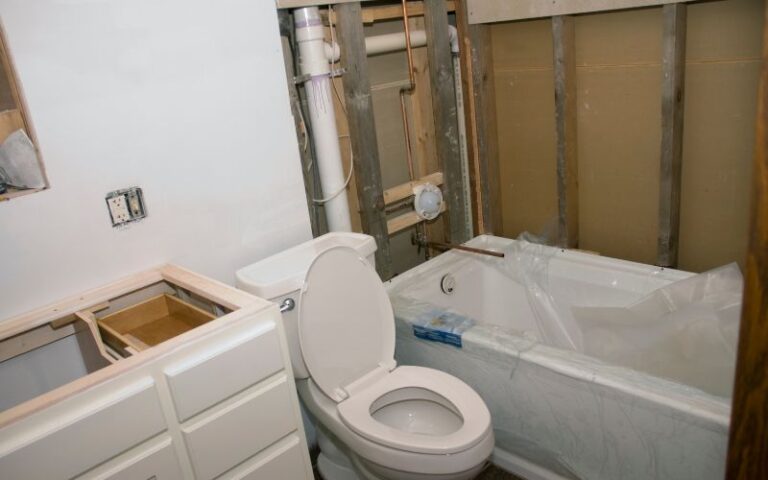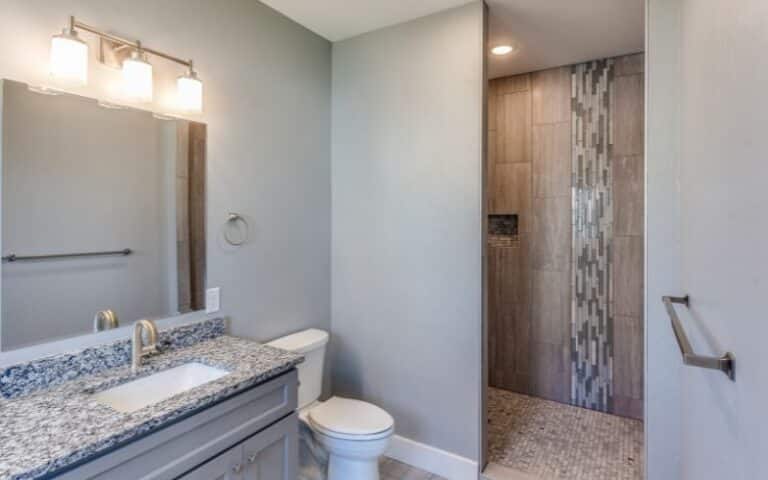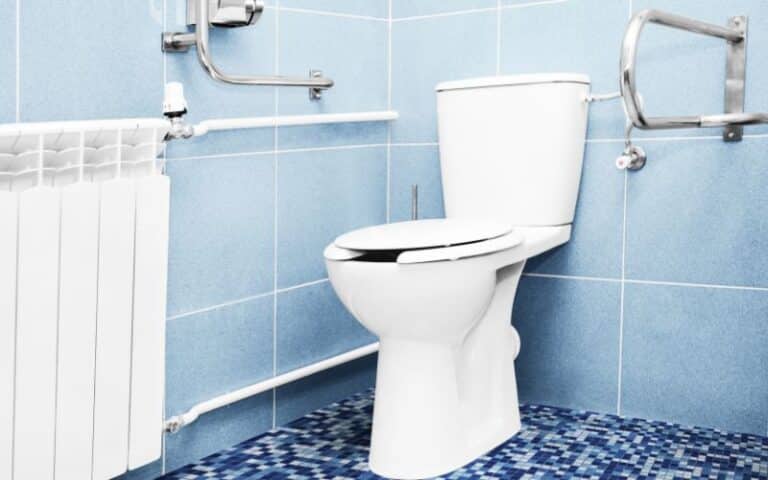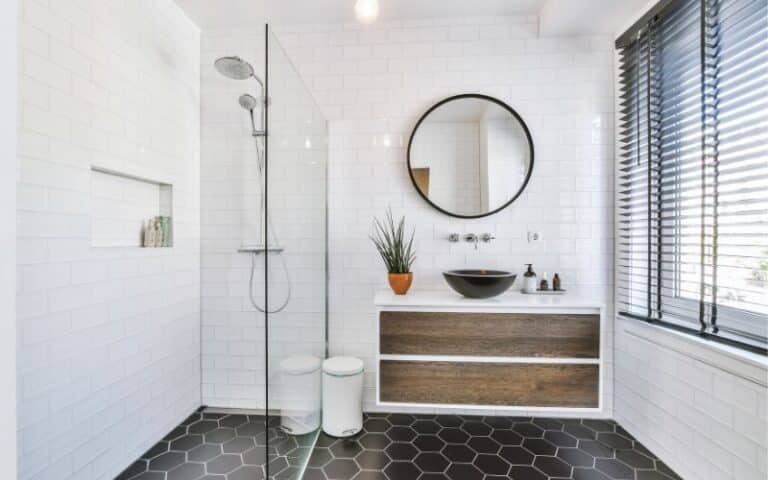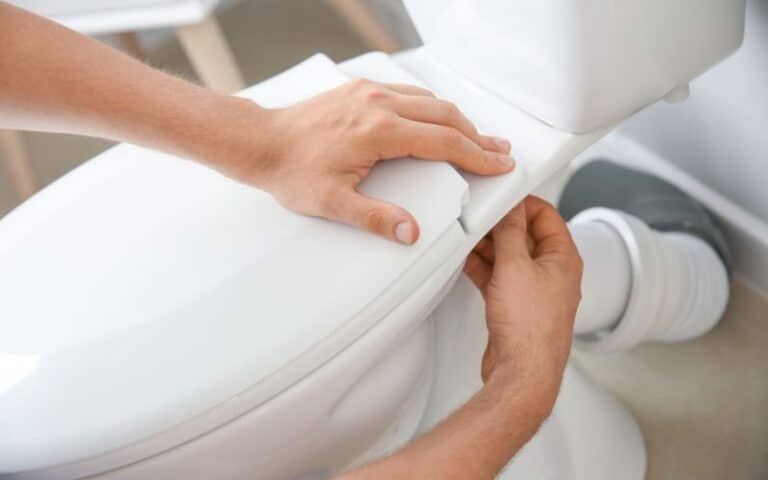A well-functioning toilet is paramount in any household or establishment.
And finding out your toilet is still running even after replacing all parts can be frustrating, not to mention wasteful.
You may be wondering what is causing your toilet to run even after replacing all the parts; well, you are in the right place; keep reading to find out.
There are several reasons why your toilet is still running after replacing all parts. It could be an improper installation of the new parts, a faulty flapper, a defective overflow tube, or an issue with the fill valve. Also, the water supply line can be a problem.
In this article, I will explore the common causes of a running toilet even after replacing all parts.
By the end, you will know the best ways to manage the situation and the most effective solutions to put an end to this issue.
5 Reasons Why a Toilet Will Still Run After Replacing All Parts
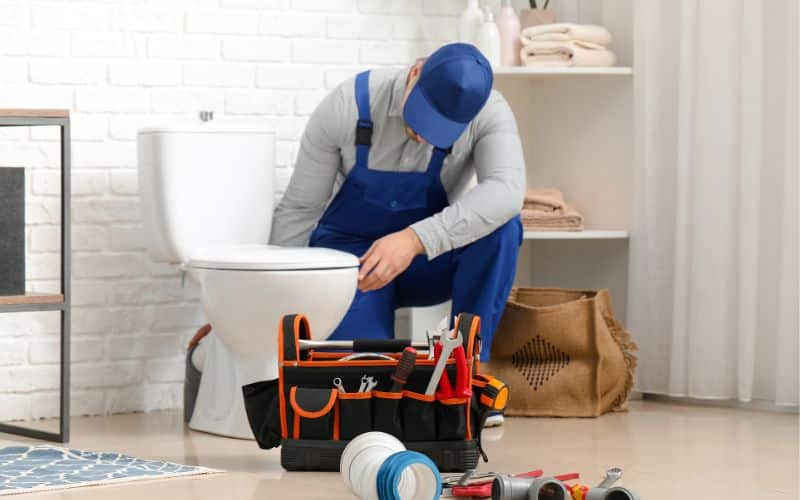
Knowing why your toilet is still running after replacing all parts is the first step in looking for a solution to the problem.
Here are 5 reasons why a toilet will still run after replacing all parts.
#1. Improper Installation of the New Parts
One possible reason for a running toilet is improperly installing the new parts.
When replacing parts such as the flapper, fill valve or flush valve, it is crucial to follow the manufacturer’s instructions carefully.
Even the slightest misalignment or improper attachment can result in a toilet that continues to run. To ensure a proper installation, double-check the alignment of all components.
For instance, considering the flapper, the flapper chain connects the flush handle to the flapper valve, enabling the toilet to flush properly.
If the chain is too slack or tight, it can interfere with the proper operation of the flapper valve, causing a continuous water flow.
To remedy this, adjust the chain length by loosening or tightening it until there is sufficient slack for the flapper valve to close completely after each flush.
#2. A Defective Flapper
Another dominant reason for a running toilet is a broken flapper.
The flapper is responsible for sealing the flush valve and preventing the continuous flow of water into the toilet bowl.
If the flapper does not create a tight seal, water will leak into the bowl, causing the toilet to run.
In some cases, the new flapper you purchased may be defective or of poor quality. Consider replacing it with a higher-quality flapper compatible with your toilet model.
#3. A Wrongly Adjusted Fill Valve
An incorrectly adjusted fill valve can also cause a running toilet.
Adjusting the fill valve to the manufacturer’s recommended water level would help as it controls the water level in the toilet tank.
If the water level is too high, it can overflow into the overflow tube, resulting in continuous running.
Conversely, if the water level is too low, it may not replenish properly, leading to a constantly running toilet.
Adjust the fill valve accordingly and perform a few flush tests for proper calibration.
#4. A Problem With the Overflow Tube
In some cases, an issue with the overflow tube can cause a running toilet. The overflow tube is a vertical tube connected to the flush valve that directs excess water into the toilet bowl.
If the water rises above the designated level, it should flow into the overflow tube.
However, if the tube is damaged, misaligned, or blocked, water may continue to run, as it has nowhere else to go.
Inspect the overflow tube for any signs of damage, misalignment, or blockage, and make the necessary repairs or adjustments.
#5. A Problem With the Flush Valve
Also, a running toilet can result from a defective or worn-out flush valve. The flush valve releases water from the tank into the bowl during a flush.
Over time, the seal around the flush valve can deteriorate, resulting in water leakage and continuous running.
If so, replacing the flush valve with a new one usually solves the problem. Ensure the new valve aligns properly with the drain hole and the seal is tight and intact.
How to Stop Good Toilet Parts From Running?
A running toilet can be an incredibly disturbing, wasteful, and costly problem.
Not only does it lead to excessive water consumption, but it can also strain your finances due to increased water bills.
However, with a few simple steps, you can easily troubleshoot and fix this common household issue while preventing further damage.
Let’s delve into the various techniques to stop good toilet parts from running and restore the tranquillity of your bathroom.
First, it is important to understand the main causes of a running toilet. The two primary culprits are a faulty flapper or a defective fill valve.
The flapper is a rubber valve that seals the outlet at the tank’s bottom. Water can continuously flow into the bowl when it is damaged or misaligned.
On the other hand, the fill valve is responsible for refilling the tank after each flush. If it malfunctions, the water level may rise above normal, leading to a running toilet.
Identifying which part is defective will help you target your troubleshooting efforts more effectively.
Generally, recognizing the key components of your toilet’s inner workings is crucial in identifying the root cause of the problem.
Once you understand the functions of the various components, you won’t have a problem stopping the good parts of your toilet from running.
For instance, the fill valve regulates water flow into the toilet tank after each flush. The fill valve might be compromised if the water continuously runs or periodically refills.
Start by inspecting the float ball or cup connected to the fill valve.
Ensure it moves freely and is not stuck in a raised position. If so, gently adjust the float mechanism to restore its proper positioning.
Also, the flapper valve is responsible for sealing the water outlet between the toilet tank and the bowl.
A worn-out or misaligned flapper can cause water to constantly leak from the tank into the bowl, resulting in a never-ending running toilet.
To address this issue, first, turn off the water supply to the toilet using the shut-off valve located near the base.
Next, inspect the flapper for any signs of damage, deterioration, or improper alignment.
Clean or replace the flapper, ensuring it creates a tight seal when closed.
It will also help to maintain the flush valve. The flush valve is a critical component that controls wastewater release during each flush.
If the flush valve fails to shut completely after flushing, water will continuously flow into the toilet bowl.
Ensure the chain connecting the flush handle to the flapper allows full release and closure.
Adjust the chain length if needed, ensuring no slack could interfere with the proper functioning of the flapper.
How Can I Manage a Running Toilet Without Replacing Any Parts?
Addressing a running toilet saves water, reduces costs, and prevents potential damage to your bathroom.
You can efficiently troubleshoot and resolve common issues by understanding the key components of your toilet’s mechanism.
Managing a running toilet without replacing parts, especially damaged ones, can be demanding.
The best option is to prevent the damage from happening in the first place. The first step when managing a running toilet is looking for the faulty component.
For instance, several factors can result in a faulty flapper that won’t require a replacement of the flapper, and in such cases, you can manage the component.
It would help to know that you can patch a leaking flapper or properly clean the component in case of a clog.
There may be other underlying issues if neither the flapper nor the fill valve is to blame for your running toilets.
The problem could be a loose flush handle, a defective overflow tube, or a faulty tank float.
Inspect these components and adjust them appropriately. Sometimes, the water pressure may be too high, causing the fill valve to release water continuously.
You can adjust the water pressure at the main supply valve or install a pressure-reducing valve if necessary.
Generally, it would help to carry out regular maintenance and careful inspection when managing a running toilet.
Schedule routine toilet maintenance, including inspecting the flapper, fill, and flush valves to ensure they are in proper working order.
Additionally, check for any signs of mineral deposits or blockages that could hinder their performance. Clean any faulty components promptly.
Running toilets consume a lot of water, increasing water bills when not properly handled. As such, you must do everything possible to repair leaks or constantly run toilets.
The table below shows an estimate of gallons of water consumed by toilet leaks daily, depending on the inches of the leaks.
| Leak Size | Gallons Consumed Per Day |
|---|---|
| A seeping leak | 15 gallons |
| A 1/32-inch | 264 gallons |
| A 1/16-inches | 934 gallons |
| A 1/8-inches | 3806 gallons |
FAQs
Does a Running Toilet Need to be Replaced?
A running toilet does not need an immediate replacement. However, it would help not to ignore it; first, find out the cause and how best to fix it.
Is It Okay to Leave a Toilet Running?
A running toilet can expend several gallons of water daily. As such, it is best to repair running toilets immediately.

